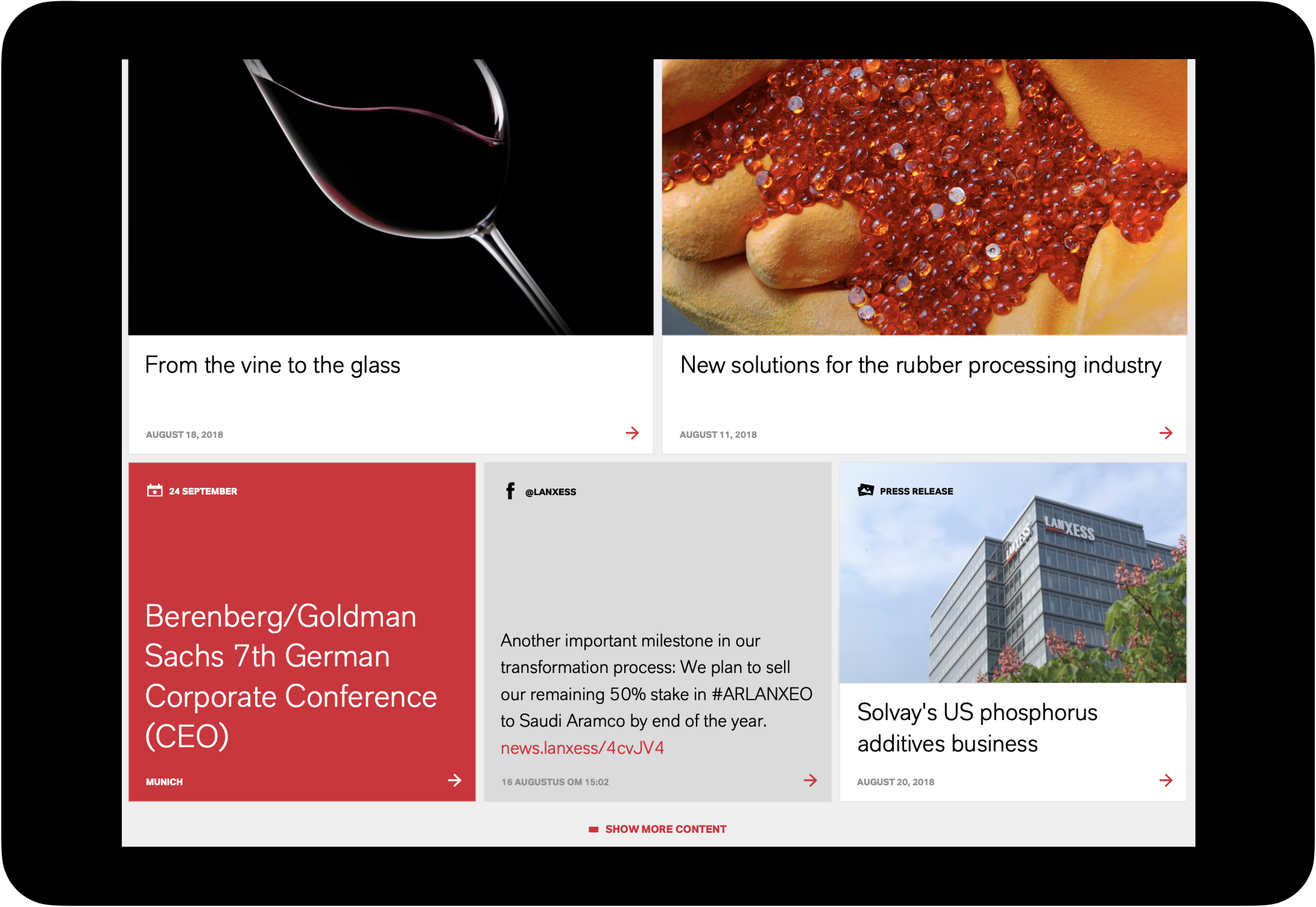
Lanxess
Digital Design
Art Direction

We designed a completely new digital platform for the German chemicals company Lanxess. The brand identity has its roots in the German design history, Bauhaus. This movement is characterized by a minimalist style: linear and geometric shapes.
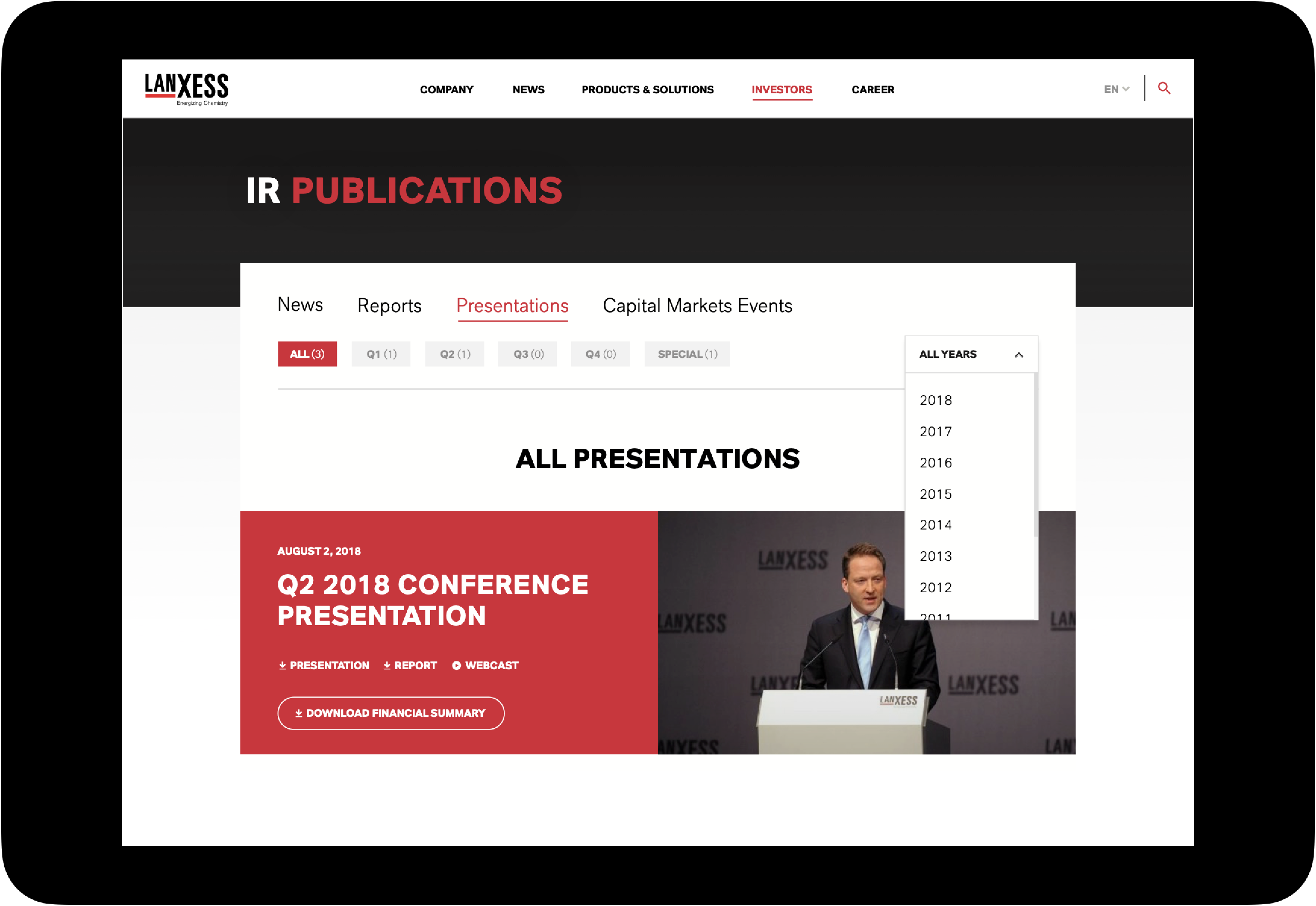
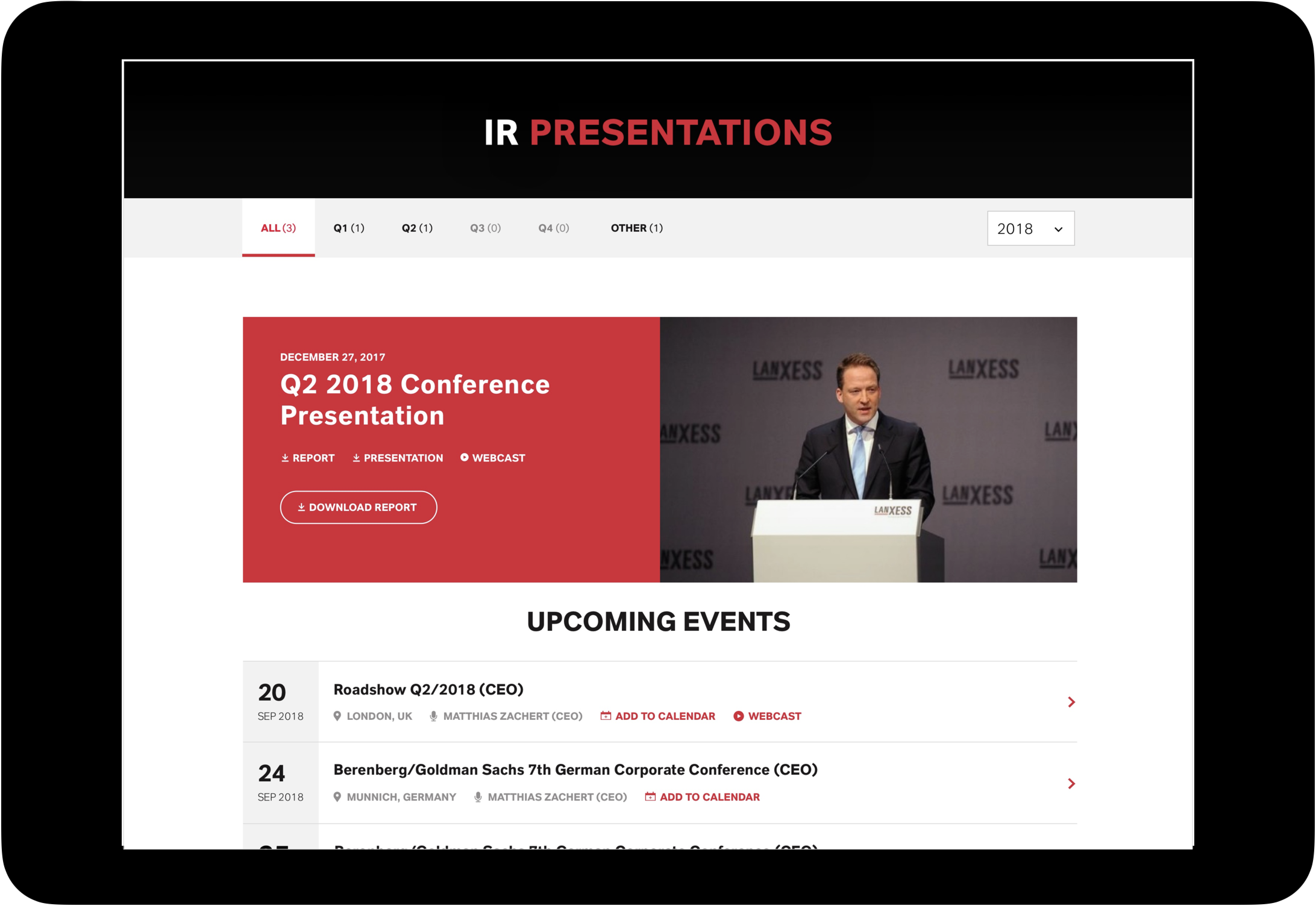
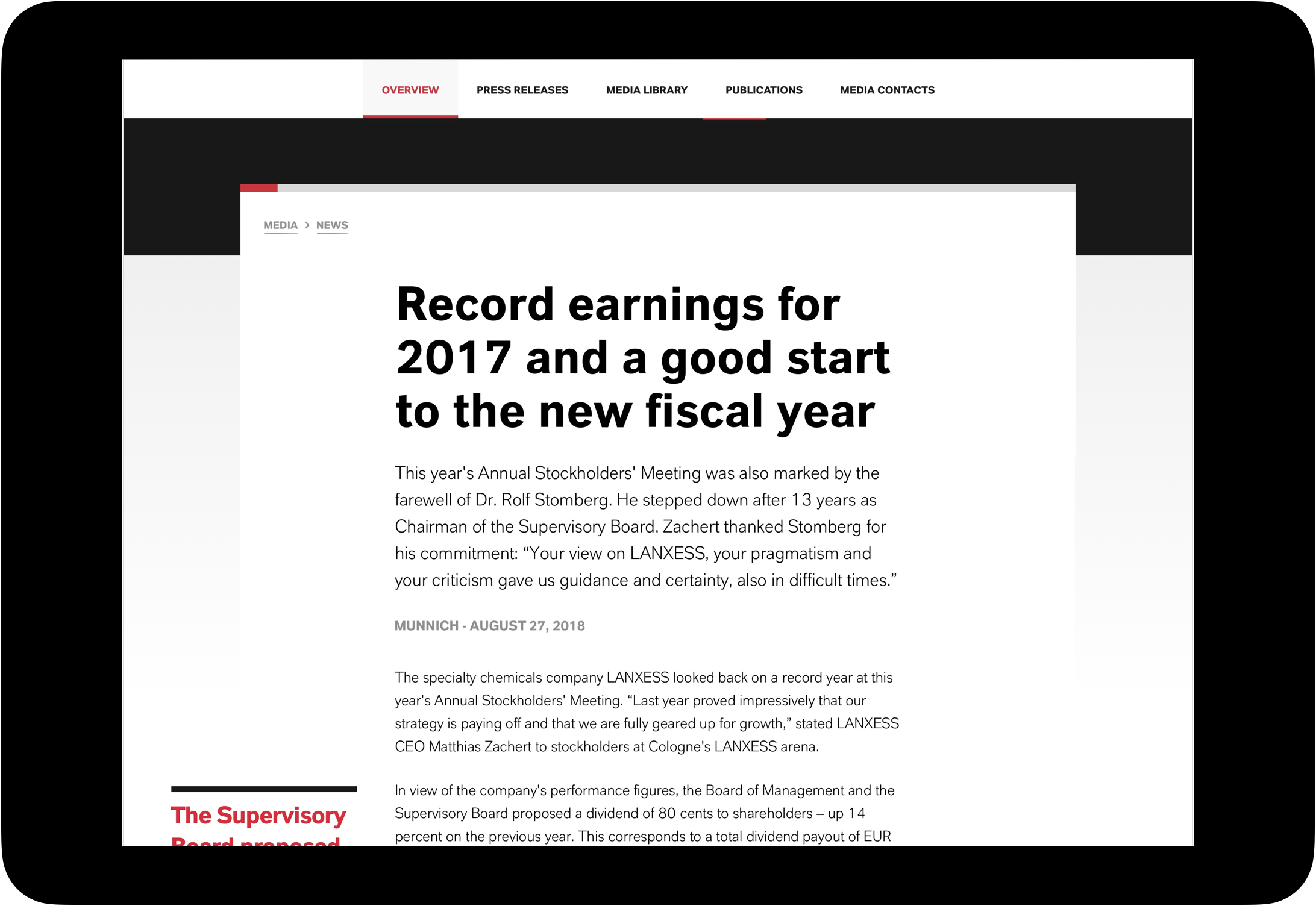
Context
We designed a completely new user and digital brand experience for the German specialty chemicals company Lanxess, following the migration to Sitecore. By working two days a week on location in Cologne with a small design team consisting of a creative director, customer experience strategist, visual designer, interaction designer and front-end developer, we worked closely with the various business stakeholders and the development team.
Insights & Strategy
Based on a UX/UI audit, we made an analysis of the current situation of the platform and identified the areas for improvement based on the business objectives and the brand proposition. In workshops with the brand managers, it was investigated how the brand identity can come to life in the digital domain. These exercises resulted in a set of design principles that give direction to look and feel, interaction and content.
Concept & Design
We designed a completely new digital platform for the German chemicals company Lanxess. The brand identity has its roots in the German design history, 'Bauhaus'. This movement is characterized by a minimalist style: linear and geometric shapes. However, in this project the minimalist functional style contrasts with spectacular expressive videos that tell the brand story of Lanxess.
The product and brand finder is the heart of the Lanxess website. A new product strategy and weekly work sessions with the product owners resulted in a new hierarchy and navigation model.
Context
We designed a completely new user and digital brand experience for the German specialty chemicals company Lanxess, following the migration to Sitecore. By working two days a week on location in Cologne with a small design team consisting of a creative director, customer experience strategist, visual designer, interaction designer and front-end developer, we worked closely with the various business stakeholders and the development team.
Insights & Strategy
Based on a UX/UI audit, we made an analysis of the current situation of the platform and identified the areas for improvement based on the business objectives and the brand proposition. In workshops with the brand managers, it was investigated how the brand identity can come to life in the digital domain. These exercises resulted in a set of design principles that give direction to look and feel, interaction and content.
Concept & Design
We designed a completely new digital platform for the German chemicals company Lanxess. The brand identity has its roots in the German design history, 'Bauhaus'. This movement is characterized by a minimalist style: linear and geometric shapes. However, in this project the minimalist functional style contrasts with spectacular expressive videos that tell the brand story of Lanxess.
The product and brand finder is the heart of the Lanxess website. A new product strategy and weekly work sessions with the product owners resulted in a new hierarchy and navigation model.
The minimalist functional style contrasts with spectacular expressive videos that tell the brand story of Lanxess.

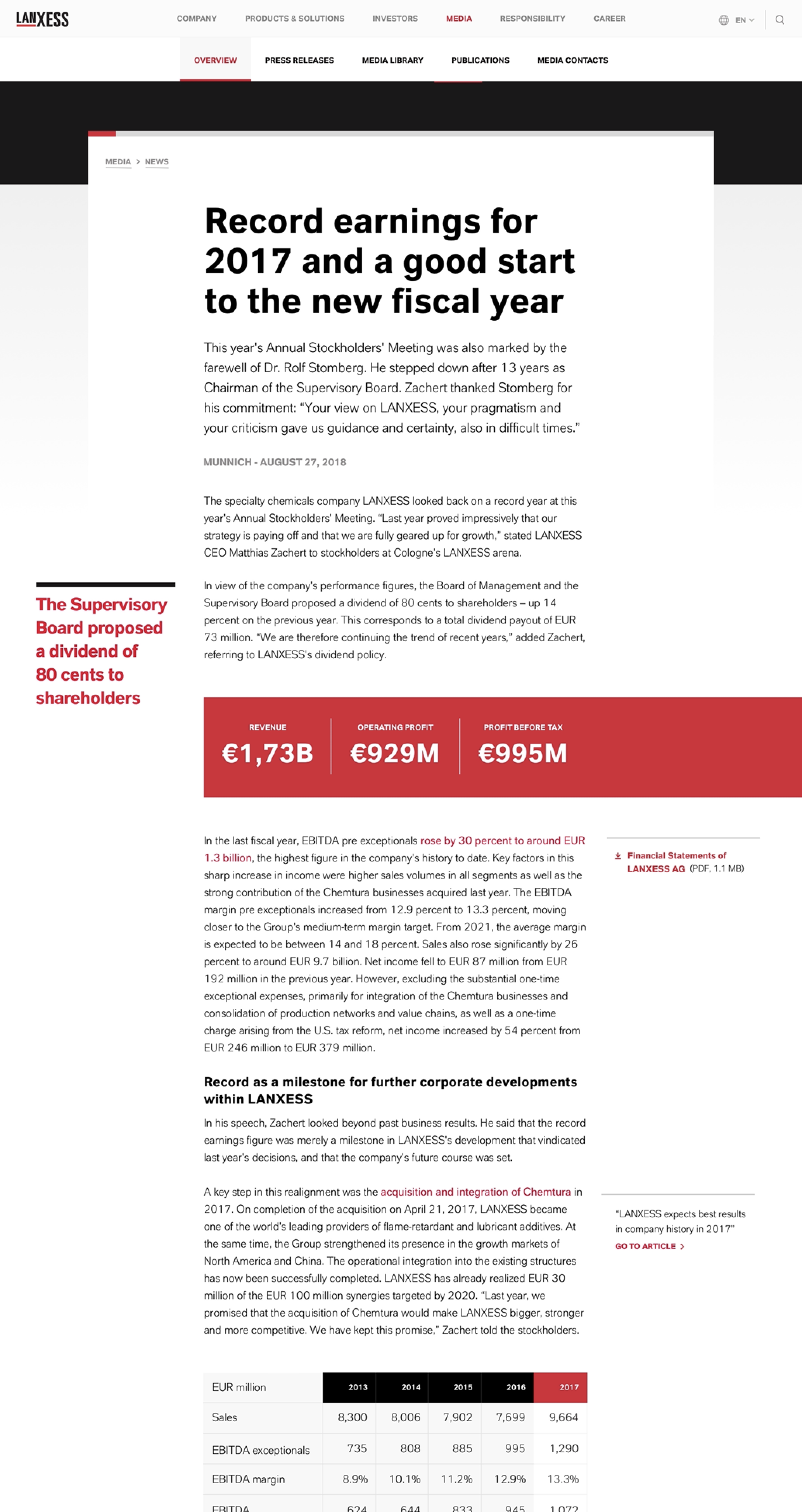
Minimalism is craftsmanship. How can you design and present information and functionalities as clearly and user-friendly as possible? Designing in the spirit of Bauhaus meant for us a quest for perfection. In search of where form and function become one.
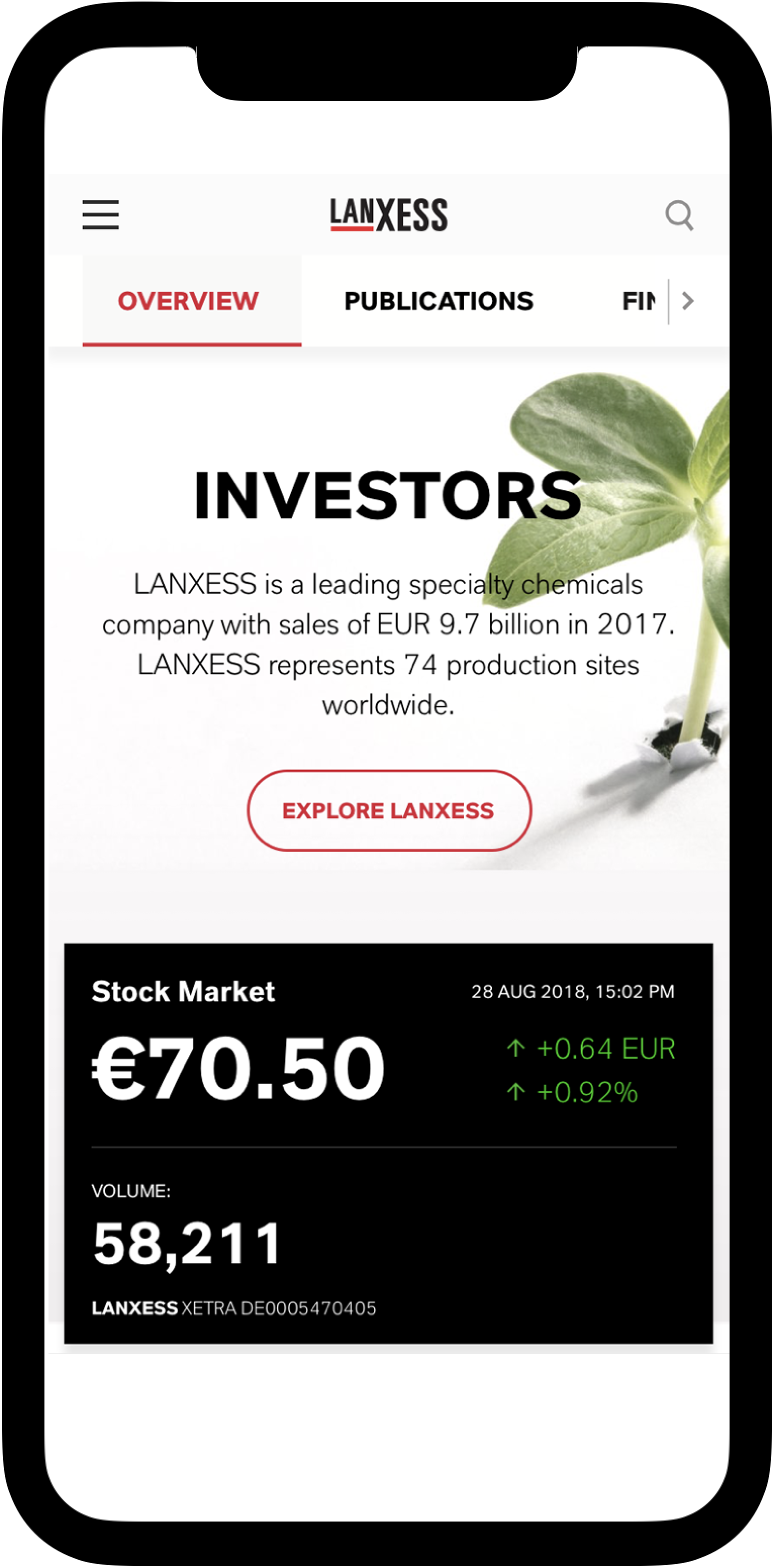
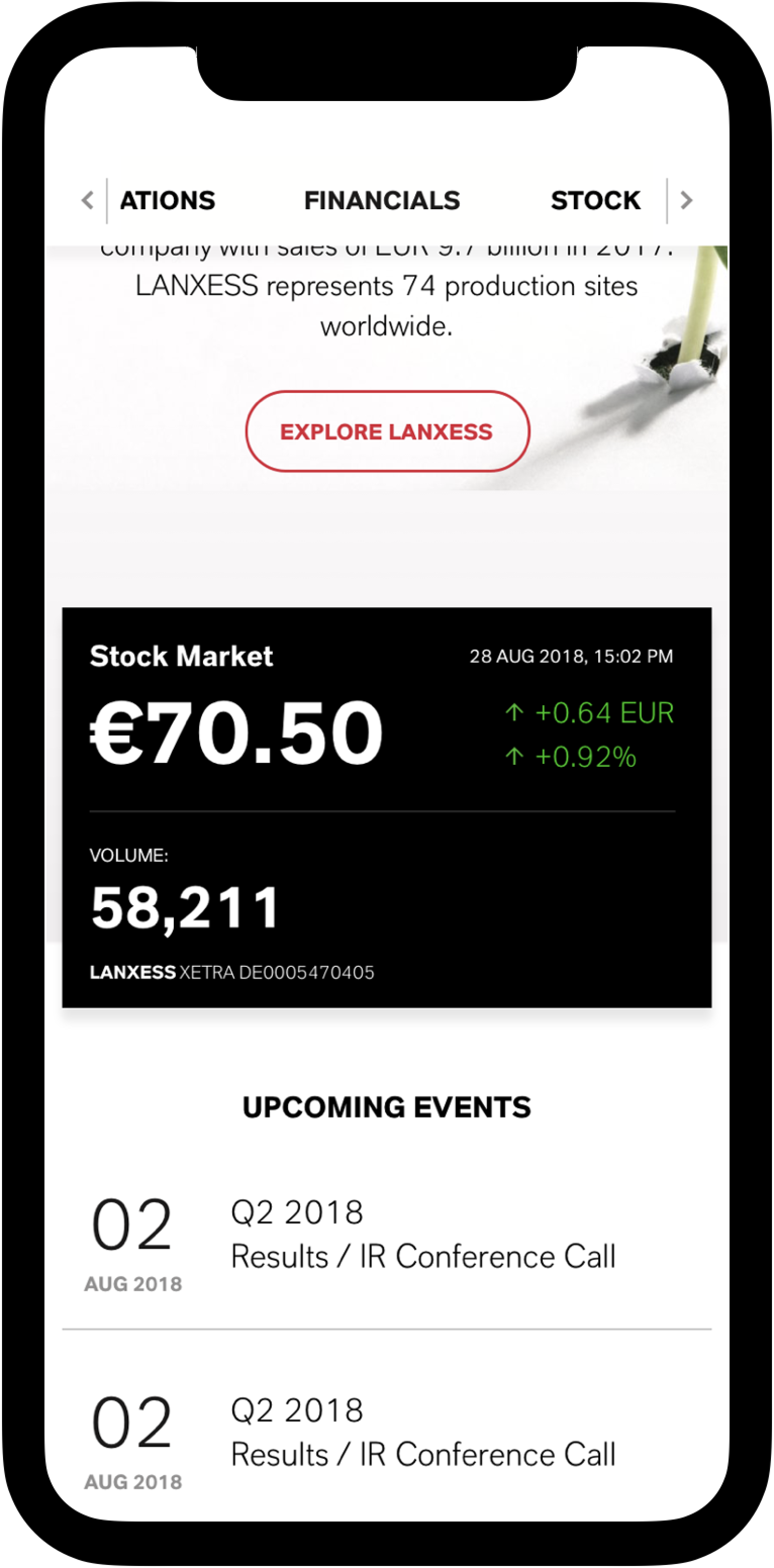

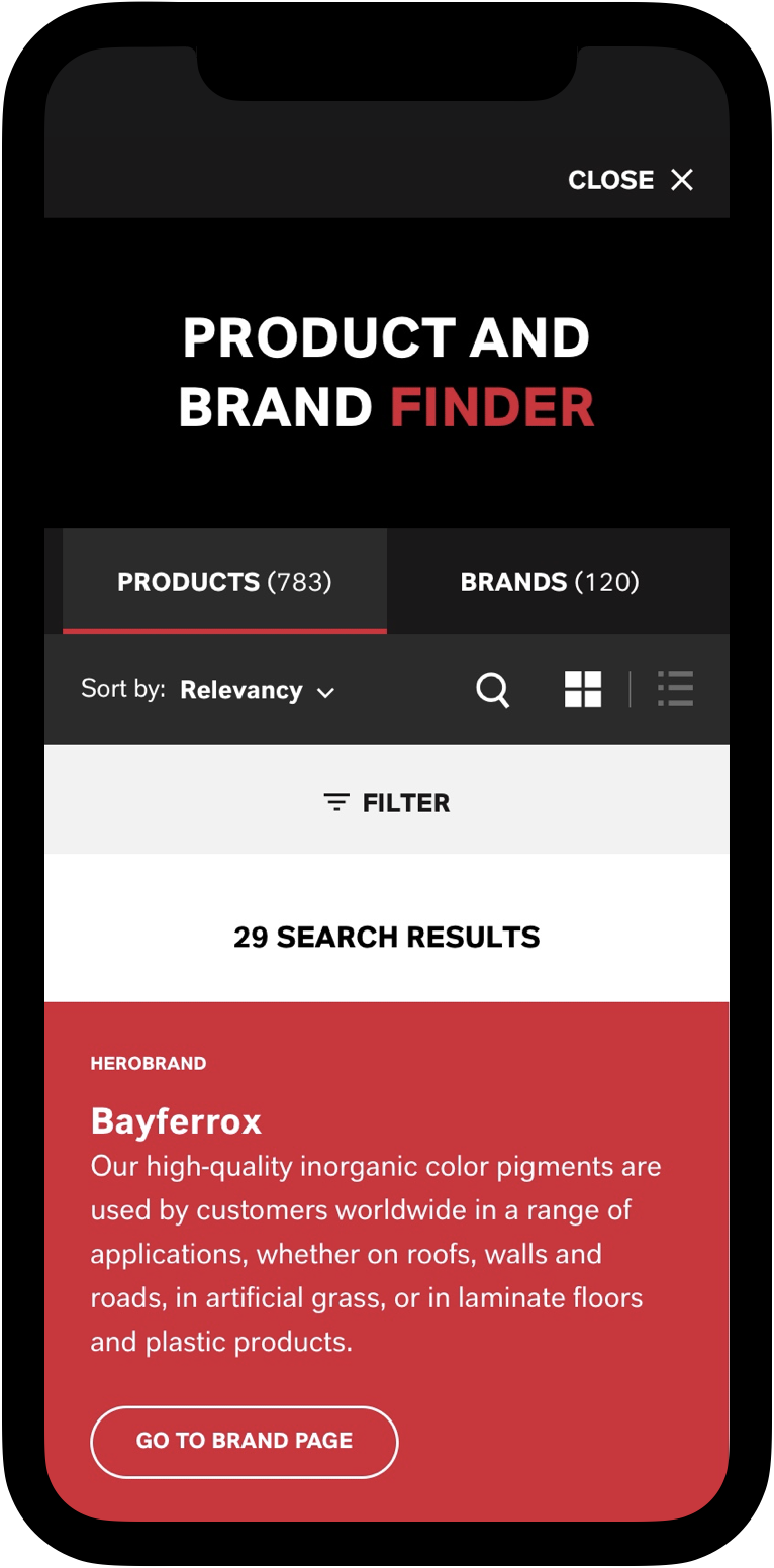
Bauhaus is also the movement in which the tradition of craftsmanship was merged with modern technology. Raw materials are used and the construction, for example the grid, is often clearly visible. Decoration is not allowed and is even considered as a crime.
